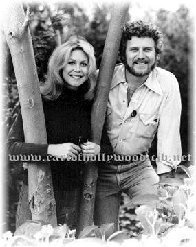Barricade tape is brightly colored tape (often incorporating a two-tone pattern of alternating yellow-black or red-white stripes or the words "Caution" or "Danger" in prominent lettering) that is used to warn or catch the attention of passersby of an area or situation containing a possible hazard. It acts as a minor impediment to prevent accidental entrance to that area or situation and as a result enhances general safety. Barricade tape is also known as construction tape or barrier tape, or in reference to the safety hazard involved as caution tape, warning tape, danger tape or hazard tape. When used by police, the tape is named police tape.
The tape is often wrapped and affixed as a visual warning sign and demarcation, for instance against entering a dangerous area, such as an industrial or commercial building site, a roadworks construction site or the scene of an accident or a crime (for crime scene preservation), or against handling inoperative machinery or appliances.
Description
Barricade tape is made with durable, resilient, tear-proof plastic materials such as polyethylene, polypropylene, or nylon. Different manufacturers offer different sizes and thicknesses of barricade tape. Barricade tape often has a bright background and pre-printed bold warning text. It is also possible to purchase plain barricade tape and write a custom message on it. However, care should be taken when using custom tape, as barricade tape designs may be required to comply with regulations, such as the Occupational Safety and Health Administration (OSHA) and American National Standards Institute (ANSI) regulations (when used for purposes subject to regulation by these organizations) in the USA.
Hazard tape. This is used in locations containing a substantial danger. Examples include electrocution hazards or areas within which there is a risk of exposure to toxic chemicals. In some regions, the specific color combination indicates the type of threat. For example, yellow-black tape may be used to signal the presence of a physical hazard (e.g., a hole), while magenta-yellow can denote a radiation hazard. This type of barrier tape is commonly used in laboratories, production areas, and industrial zones.
Police tape or law enforcement tape. This type of barrier tape is used to isolate, protect and preserve a crime scene. Police tape is used to notify the public that an investigation is ongoing and that a particular area is restricted. This is usually seen with a yellow-white, yellow-black or blue-white color combination, and usually say "POLICE LINE DO NOT CROSS" or "CRIME SCENE DO NOT CROSS".
Firefighter tape This serves the same purpose as police tape and hazard tape. Firefighter tape is used to isolate a particular area during or after a fire to keep the public away from fire-related risks (e.g., smoke inhalation, airborne particulate matter, and damaged structures).
And births this date include...

1957 – Lyle Lovett, American singer
Books have a mind of their own. They take time to develop, research, draft, edit, revise, and rewrite. We devour stories. We indulge in them as we drift off to sleep or travel. And sometimes, we allow them to collect dust on several flat surfaces in our homes. Those stories may take years to reach a publisher and just as long to reach a bookshelf. We may have only one favorite author or many collected works with which we cannot part. Whether we prefer fiction, non-fiction, or a mix of both, authors have been telling stories to fill our heads for thousands of years.
Authors also keep a record of history through their stories. They mark time through their observations. Their tales create remarkable memories of a place, sealing it between the pages of the binding. Their books allow us to keep coming back to visit again and again.
After her grandmother’s death in 1968, Sue Cole promoted the observance of National Authors Day. She urged people to write a note to their favorite author on November 1, to “brighten up the sometimes lonely business of being a writer.” She also suggested flying the American flag as another way of showing appreciation for the writers who have created American literature.
HOW TO OBSERVE
Purchase some books by your favorite author to support them. Share your favorite novels online while encouraging an aspiring author.
NATIONAL AUTHOR’S DAY HISTORY
In 1928, Nellie Verne Burt McPherson, president of the Bement, Illinois Women’s Club, had an idea of setting aside a day to celebrate American authors. McPherson was a teacher, and throughout her life, an avid reader. While she was recuperating in the hospital during World War I, she wrote a fan letter to fiction writer, Irving Bacheller. She told him how much she enjoyed reading his story Eben Holden’s Last Day A’ Fishin.
Upon receiving her letter, Bacheller sent her an autographed copy of another story. It was then that McPherson realized she would never be able to thank him adequately for his gift. McPherson decided to show her appreciation by submitting an idea for a National Author’s Day to the General Federation of Women’s Clubs. In May of 1929, the club endorsed a resolution for National Author’s Day to be observed honoring American writers. The United States Department of Commerce recognized this day in 1949.
FAQ
Q. Do I have to be published to be considered an author?
A. No. If you created an original article, poem, story, or other written work, you are an author.
Q. How do I show appreciation to my favorite author?
A. First, read the author’s books. But you’re already doing that. You should also share the books with others. Other ways to support an author is by:
- Writing a review on their author page where the book is sold.
- Read the author’s older works.
- Follow them on their social media pages.
Q. How are books organized in a library?
A. Most libraries use either the Library of Congress Classification System or the Dewey Decimal System. Books are first classified by topic and subtopics or genre. Librarians then shelve the books in alphabetical order by title or author’s last name.
Q. What’s the difference between an inscribed copy of a book and a signed copy?
A. An inscribed copy includes a short message to someone along with the author’s signature. A book with an author’s signature is simply signed. However, there are different ways a book may be signed and different types of inscriptions, too.











1 comment:
Wish I could still read, with one working eye not easy. Do have magnifying glass but a pain. Always lots of info in your posts. As far as cooking, not doing much anymore. Guess the H.S. reunion in lower desert desert was fun for those who attended.
Post a Comment